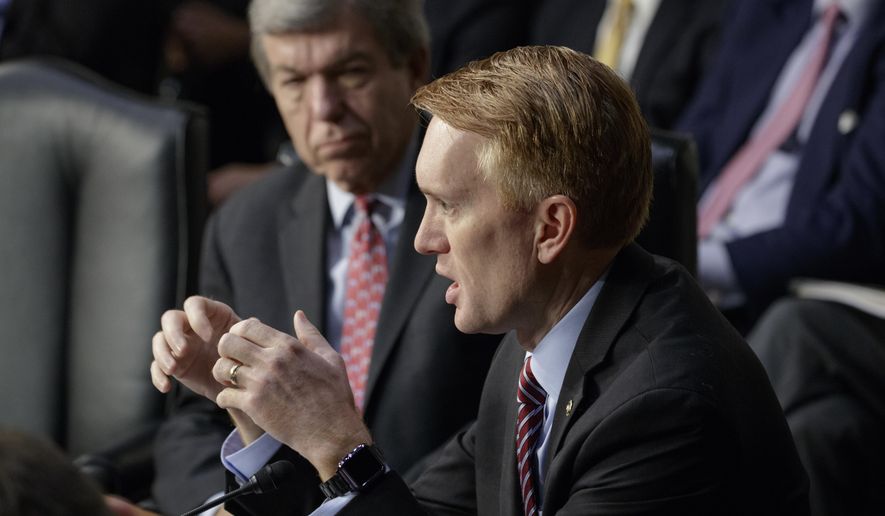Republican senators unveiled a new set of chamber rules Wednesday that would allow them to speed President Trump’s nominees through on an expedited basis, limiting Democrats’ ability to slow-walk the process and throttle the number of candidates who can be confirmed.
The proposal, written by Senate Rules Committee Chairman Roy Blunt and Sen. James Lankford, would reduce the maximum debate time after a filibuster has been defeated from 30 hours to two hours for most nominees.
Republicans have chafed as Democrats have used the filibuster to slow-walk hundreds of Trump nominees, forcing the Senate to spend months of floor time to get the candidates into their jobs.
The issue is about to become acute. The Senate Judiciary Committee is expected to approve 40 judicial picks this week, creating a glut of new nominations headed to the floor.
Under current rules, at 30 hours of debate per nominee, the Senate can confirm perhaps five per week — meaning it would take eight weeks of floor time to go through the judgeships with no other major action intervening. That doesn’t include hundreds of other nominees who will soon be stacked up.
The new rules first will be debated in Mr. Blunt’s committee.
“We are likely to have a mark up on that within the next week,” Mr. Blunt, Missouri Republican, told The Washington Times.
The GOP could push the rules through committee on a majority vote, but it would take a supermajority to win approval on the floor.
Democrats, who six years ago supported shorter time frames for nominees under President Obama, are now more reluctant under Mr. Trump.
“We are going to go through the committee to see if there is bipartisan support for it. I hope we do it that way, but if we can’t just because people want to slow us down and drag their feet and prevent the president form filling these nominations, then I’d be willing to consider alternatives,” said Sen. John Cornyn, Texas Republican.
The chief alternative would be to trigger the “nuclear option,” a shortcut that involves reinterpreting the rules. That can be done on a majority vote — though it’s a deeply controversial move that can undermine cooperation in a chamber that relies on comity.
Democrats used the supermajority in 2013 to cut the number of votes needed to overcome a filibuster on most nominees from 60 to a simple majority, and Republicans in 2017 used the nuclear option to extend the majority-filibuster threshold to Supreme Court nominees.
Mr. Lankford, who has been reaching out to Democrats on his proposal, said some of them may think they’ll win back the White House in 2020 and figure it’s better to change the rules now so they can avoid the sort of obstruction they have mounted against Mr. Trump.
“There is more of a sense of ‘we probably should stop this game,’” Mr. Lankford said.
His proposal would still leave a 30-hour time frame in place for Supreme Court and circuit court nominees and Cabinet-level posts in the executive branch.
But district court nominees and lower-level administrative posts would only face two hours of debate.
Republicans say the rules changes are needed because of Democrats’ unprecedented level of resistance to Mr. Trump’s nominees.
GOP leaders over the last two years had to move to head off a potential filibuster on 148 of Mr. Trump’s nominees. In the last two years of Mr. Obama’s tenure, just two nominees needed to overcome filibuster tests.
• Alex Swoyer can be reached at aswoyer@washingtontimes.com.




Please read our comment policy before commenting.